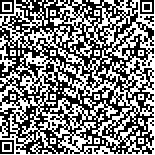本文已被:浏览 799次 下载 484次
Received:January 16, 2020 Published Online:September 20, 2020
Received:January 16, 2020 Published Online:September 20, 2020
中文摘要: 目的 探讨基于慢病管理下原发性痛风患者的临床特点及随访现状。方法 本研究为回顾性队列研究,以2015年1月至2017年6月纳入绵阳市中心医院风湿免疫科痛风慢病管理数据库的383例原发性痛风患者作为研究对象,分析患者的基线特点、治疗情况等,并在专科就诊治疗后1、3、6和12个月,进行4次随访评估,分析患者复诊率、血尿酸达标率及影响血尿酸达标治疗的相关因素。结果 383例原发性痛风患者中,男女比例为8.46∶1;年龄(55.21±16.04)岁,41~55岁发病人数最多31.85%;体质指数为(15.47±2.40)kg/m2,痛风石59例,占15.40%,痛风肾病83例,占21.17%,容易合并心血管疾病,原发性痛风复诊率3个月为59.53%,6个月后为32.90%,1年后10.7%;达标率3个月为22.45%,6个月为18.80%,1年后3.6%。6月血尿酸达标人数为72例,未达标人数为54例,将两组人群进行单因素分析,结果显示:血尿酸达标组及未达标组在年龄、体质指数、病程、高血压、糖尿病、高脂血症、肾结石、冠心病等指标差异无统计学意义(P>0.05),而性别、VAS评分、痛风肾病、合并痛风石、使用降尿酸药物之间指标差异有统计学意义(P<0.05)。多元Logistic回归分析结果提示,是否合并痛风石、痛风肾病、是否使用降尿酸药物治疗是影响原发性痛风患者血尿酸达标的主要原因(P<0.01)。结论 慢病管理下的绵阳地区原发性痛风患者随访率及血尿酸达标率较低,应加强持续性血尿酸达标治疗宣教,需进一步探讨及开展真正以患者为中心的有效慢性疾病管理。
Abstract:Objective To investigate the clinical characteristics and follow-up status of patients with primary gout based on chronic disease management. Methods A retrospective cohort study was made on 383 patients with primary gout who were enrolled in database in chronic disease management from January 2015 to June 2017.The baseline characteristics and treatment responses of the patients were analyzed, and the follow-up evaluations were carried out at 1-, 3-, 6-and 12- month after treatment in the specialist department.The further consultation rate, standard rate of serum uric acid and the related factors influencing the standard treatment of blood uric acid were observed and analyzed. Results The ratio of male to female patients was 8.46[DK]∶1, the age was (55.21±16.04) years old, mean BMI was (15.47±2.40)kg/m2 and the incidence of primary gout was higher in the patients of 41-55 years old (31.85%).There were 59 patients with gout stone (15.40%) and 83 patients with gouty nephropathy (21.17%), who were prone to have cardivascular disease.The recurrence rate of primary gout was 59.53% at 3 month, 32.90% at 6 month and 10.7% at 1 year after treatment.In 6 months, there were 72 cases with normal blood uric acid level (serum urate≤360 μmol/L, standard group) and 54 cases without reaching the normal level (serum urate>360 μmol/L, non-standard group).Univariate analysis showed that there were no significant differences in age, BMI, course of disease, medical history of hypertension, diabetes, hyperlipidemia, kidney stones and coronary heart disease between two groups (all P>0.05), but there were statistical differences in gender, VAS score, incidences of gout nephropathy and gout stone and use of uric acid lowering drugs (all P<0.05).Multiple Logistic regression analysis indicated that gouty nephropathy, use of urate-lowering drugs and gouty tophus were the main factors affecting the blood uric acid level of patients with primary gout(all P<0.01). Conclusion Under chronic disease management in Mianyang area, the follow-up rate and the standard-reach rate of blood uric acid level are relatively low in patients with primary gout.It is necessary to strengthen the education for normal blood uric acid level and develop the patient-centered care of chronic disease management.
文章编号: 中图分类号: 文献标志码:A
基金项目:四川省科技计划项目(2017SZ01482)
| Author Name | Affiliation |
| DONG Jian-ling, YANG Jing, LI Min, ZHANG Yu, ZOU Jin-mei, TIAN Lan, YANG Li | Department of Rheumatology and Immunology, Mianyang Central Hospital, Mianyang, Sichuan 621000, China |
| Author Name | Affiliation |
| DONG Jian-ling, YANG Jing, LI Min, ZHANG Yu, ZOU Jin-mei, TIAN Lan, YANG Li | Department of Rheumatology and Immunology, Mianyang Central Hospital, Mianyang, Sichuan 621000, China |
引用文本:
